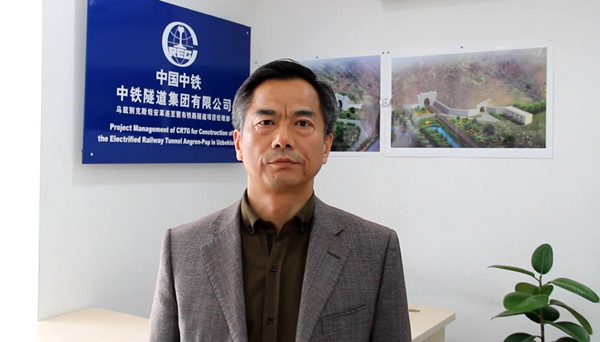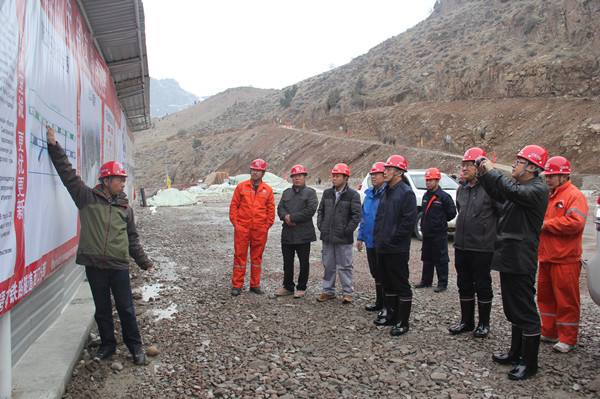The Qamchiq Tunnel, part of the Angren-Pap railway line, in Tashkent, Uzbekistan, was launched on June 22, 2016.
Constructed by China Railway Tunnel Group (CRTG), the 19.2-km Qamchiq Tunnel is the longest tunnel in Central Asia. It is part of the 169 km Angren-Pap railway line, which improves Uzbekistan's infrastructure and enhances China's links with Central Asia.

Zhou Xiaoguang, manager of the Qamchiq Tunnel project. [Photo/sasac.gov.cn]
With a total investment of $455 million, the tunnel was the first overseas project independently undertaken by CRTG. Zhou Xiaoguang, manager of the project, and his team took three years to complete it, three months ahead of schedule.
At the beginning, the project ran into huge difficulties due to shortage of supplies, complicated customs clearance procedures and long transportation times.
Amid so many challenges, Zhou’s thinking was clear. He set down the basic principles for management -- safety and quality control, cost reduction and increased efficiency as soon as he took charge of the project.
Based on his management experience of overseas projects and analysis of the characteristics of the tunnel project, Zhou made detailed plans for the construction and management from the beginning, ensuring the high-quality and efficiency of the project.
Zhou fully realized the potential of his team, which specializes in design, construction, research & development and manufacturing in tunnel engineering.
Zhou used to stay with technicians and managerial personnel on the site to discuss solutions for all kinds of problems, such as an unstable power supply and undesirable weather and geological conditions. Their fast response to emergencies ensured the completion of the project on such a tight schedule.
He initiated a management accountability system and improved the communication mechanism among the commercial affairs, production, technology, design and logistics divisions.

Zhou and his team took three years to complete the project, three months ahead of schedule. [Photo/sasac.gov.cn]
Besides regular meetings, Zhou also invited senior international project managers to offer training programs and organized brainstorming sessions to tackle problems as they came up.
The project recruited more than 800 local employees who worked in almost all positions. It was part of Zhou’s efforts to promote localization and realize win-win results.
Thanks to innovations in design and technology, the digging of a 47.3 km tunnel system, which consists of the main tunnel, shafts and other supportive facilities, took only 900 days.
Zhou’s pragmatic work style and professionalism as well as the joint efforts of all the parties involved led to acknowledgment of the project’s high quality by the project owner and Uzbek officials.
Uzbekistan's president Shavkat Mirziyoyev paid three visits to the site and spoke highly of the efficiency and progress of the project. He said CRTG was a “professional and responsible” Chinese enterprise.
As the largest non-resource-based cooperation project between China and Uzbekistan, the project was considered a model of China’s export of high-quality production capacity to Uzbekistan and has greatly boosted cooperation on transport infrastructure between the two sides.
The Qamchiq Tunnel project began in 2013 and is a key cooperation project in the China-proposed Belt and Road Initiative. It is expected to reduce regional transportation costs and help boost trade and economy.
(Executive editor: Hao Wen)